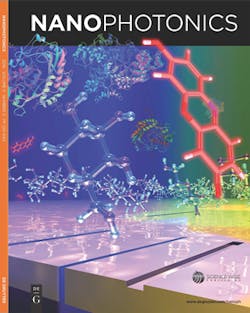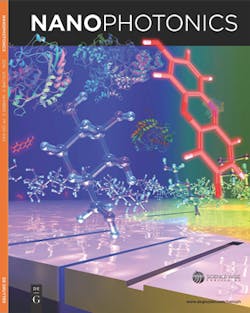PLASMONICS/DIABETES MANAGEMENT: Biosensor aims to measure glucose in saliva
A new chip-based biosensor hopes to one day allow people with diabetes to measure their glucose using saliva—and do away with needle sticks. And it promises other applications as well.
The innovation, developed by Brown University researchers, has been shown to selectively measure concentrations of glucose in a complex solution similar to human saliva, with a sensitivity amounting to just a few thousand molecules in the sampled volume. It uses a series of chemical reactions combined with plasmonic interferometry.
"We have demonstrated the sensitivity needed to measure glucose concentrations typical in saliva, which are typically 100 times lower than in blood," said Domenico Pacifici, assistant professor of engineering, who led the research. "Now we are able to do this with extremely high specificity, which means that we can differentiate glucose from the background components of saliva." The research was featured on the cover of the journal Nanophotonics.1
The biochip is made from a 1 in.2 piece of quartz thinly coated with silver. Etched in the silver are thousands of nanoscale interferometers—tiny slits, each 100 nm wide, with a 200-nm-wide groove on each side. When light is shined on the chip, the grooves cause a wave of free electrons in the silver—a surface-plasmon polariton—to propagate toward the slit. Those waves interfere with light that passes through the slit. Sensitive detectors then measure the patterns of interference generated by the grooves and slits.
When a liquid is deposited on the chip, the light and the surface-plasmon waves propagate through that liquid before they interfere with each other. That alters the interference patterns picked up by the detectors, depending on the chemical makeup of the liquid. By adjusting the distance between the grooves and the center slit, the interferometers can be calibrated to detect the signature of specific compounds or molecules, with high sensitivity in extremely small sample volumes.
Sensing specificity
In 2012, Brown researchers showed that interferometers on a biochip could detect glucose in water. But selectively detecting glucose in a complex solution like saliva is complicated by enzymes, salts, and other components that can affect the response of the sensor. The researchers solved "the problem of specificity of our sensing scheme" by using dye chemistry to create a trackable marker for glucose. They added microfluidic channels to the chip to introduce two enzymes that react with glucose in a very specific way. The first enzyme, glucose oxidase, reacts with glucose to form a molecule of hydrogen peroxide. This molecule then reacts with the second enzyme, horseradish peroxidase, to generate a molecule called resorufin, which can absorb and emit red light, thus coloring the solution. The researchers could then tune the interferometers to look for the red resorufin molecules.
"The reaction happens in a one-to-one fashion: A molecule of glucose generates one molecule of resorufin," Pacifici said. "So we can count the number of resorufin molecules in the solution, and infer the number of glucose molecules that were originally present in solution."
The team tested its approach by looking for glucose in artificial saliva, a mixture of water, salts, and enzymes. They found that they could detect resorufin in real time with great accuracy and specificity. They were able to detect changes in glucose concentration of 0.1 micromoles per liter—10 times the sensitivity that can be achieved by interferometers alone.
Next, the team will start testing with human saliva. Ultimately, the researchers hope they can develop a small, self-contained device that could give diabetics a noninvasive way to monitor glucose. But in principle, the approach could be modified to detect any molecule of interest—toxins in air or water, or chemical reactions in real time.
1. V.S. Siu et al., Nanophoton., 3, 3, 125–140 (2014); doi:10.1515/nanoph-2013-0057.

